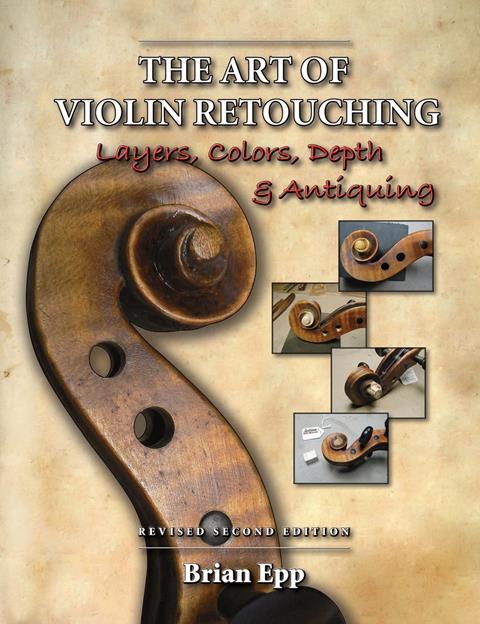John Dilworth reads the second edition of Brian Epp’s lutherie guide, including a new chapter on antiquing

The Art of Violin Retouching: Layers, Colors, Depth and Antiquing
Brian Epp
56PP ISBN 9780989618106
Sushumna Publishing $39.50
The newly released second edition of this slim ring-bound softback book is crammed with information about techniques of retouching. It is profusely illustrated, which is vital for this inherently visual subject, although the publishing quality is not of the highest. All the technique in the world will not make up for lack of understanding of colour, especially within the very limited range used by violin restorers. I have seen experts work with incredibly limited tools and materials, and produce immensely subtle and sensitive varnish repairs. Nevertheless, it is important to know what can be done and what resources are available. When I began my career, information was very hard to obtain. The techniques I learnt were quite limited to begin with, but recent innovations have come quickly and widely, and looking at this book makes me worry I have become complacent in my own ways. All information shared in this way is precious.
Generally, author Brian Epp steers a fast but safe and practical course within the basic approaches, short of the further reaches of museum-level conservation methods. He only sails a bit close to the rocks, as far as I’m concerned, in his advocacy of abrasives and scrapers. These are indeed vital tools, but I have misgivings about the advice to smooth raised cracks and remove old varnish in this way rather than resetting the crack or using solvents (which, in fact, are not really discussed at all). The new chapter on antiquing gives a slightly cursory introduction to the complexities of reproducing ancient varnish, but this is an overwhelmingly solid and informative guide to the patient craft of varnish retouching, from preparation to finishing, and Brian Epp is a trustworthy teacher. His volume seems to me to fulfil its intended purpose as a workshop companion very well.
JOHN DILWORTH


































No comments yet